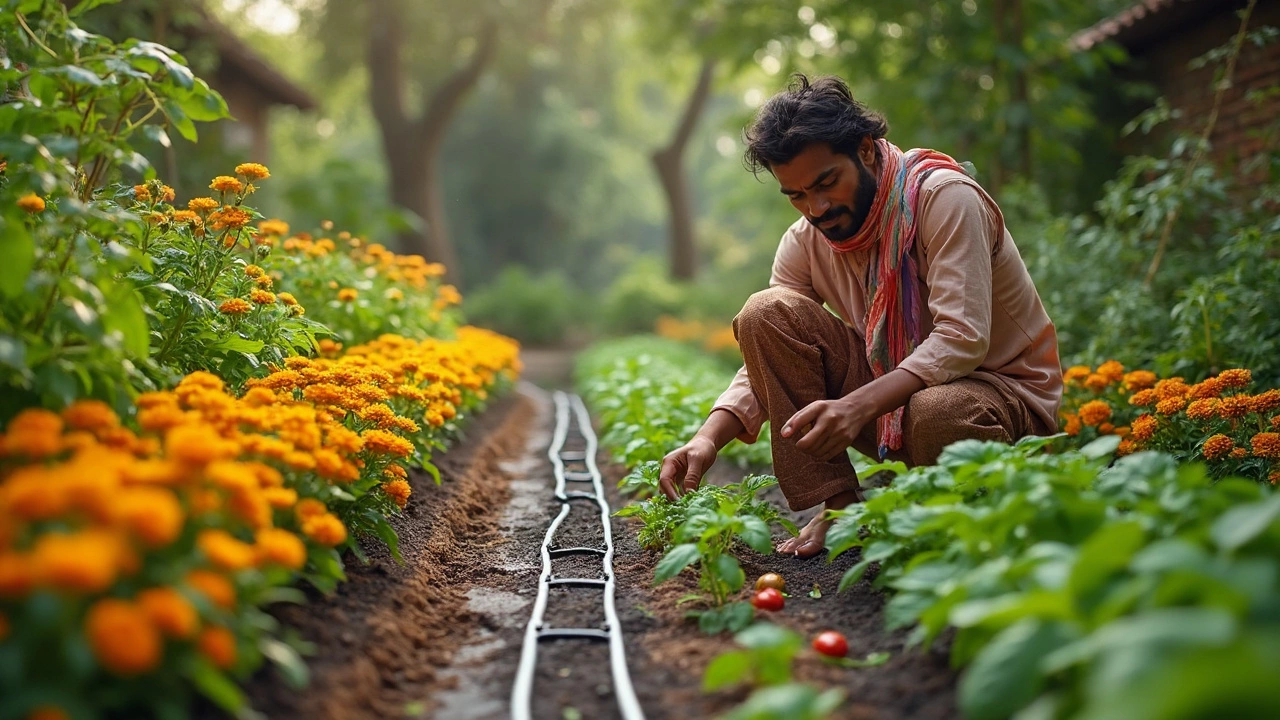Figuring out how many drip emitters you need per zone can make or break your garden's success. This guide breaks down how to calculate just the right amount without wasting water or risking thirsty plants. You’ll learn about water flow, plant needs, and even see how to avoid common mistakes. Expect practical tips and real-life examples you can use right away. Save money, save water, and help your plants thrive.
Irrigation Tips for Indian Gardens and Farms
When it comes to growing plants in India, irrigation, the controlled application of water to crops and plants to support growth. Also known as water management, it's not just about turning on a tap—it's about timing, technique, and understanding your soil. Too much water drowns roots. Too little stresses plants. And in a country where monsoons come and go, and summers turn dry, getting it right makes all the difference.
Many gardeners think irrigation means pipes and pumps, but the real key is drip irrigation, a method that delivers water slowly and directly to plant roots. Also known as micro-irrigation, it cuts water waste by up to 60% compared to traditional flooding. You’ll find it in posts about clogged emitters and uneven flow—problems that happen when dirt gets into the lines or pressure drops. Fixing them isn’t hard: clean filters, flush lines twice a year, and check for leaks after every monsoon. Then there’s soil moisture, how wet or dry the ground feels below the surface. It’s the silent signal that tells you when to water. Stick your finger in the soil—up to the second knuckle. If it’s dry, it’s time. If it’s damp, wait. No gadgets needed. In India’s clay-heavy soils, watering too often is the biggest mistake. Clay holds water like a sponge. You don’t need to water every day. Once or twice a week, deeply, is better than daily sprinkles.
Location matters too. A balcony facing west gets brutal afternoon sun—your plants there need more water than those on a shaded east side. And don’t forget containers. Small pots dry out fast. If you’re growing herbs or flowers on a terrace, check them twice a day in summer. Mulch helps. A handful of dry leaves or rice husks on top cuts evaporation and keeps roots cool.
There’s no one-size-fits-all rule. What works in Punjab won’t work in Kerala. But the basics do: water early in the morning, target the roots, not the leaves, and match your method to your crop. Tomatoes? Deep watering every 3 days. Herbs? Light, frequent sips. Vegetables in raised beds? Drip lines save time and water. You’ll see these patterns in the posts below—real fixes from real gardeners who’ve learned through trial and error.
Forget expensive gadgets. The best irrigation system is the one you understand. It’s not about how fancy your pipes are—it’s about how well you listen to your plants and soil. Below, you’ll find practical advice on fixing broken emitters, choosing the right soil mix for better water retention, and picking plants that need less water. These aren’t theories. They’re tested, tried, and working right now in Indian backyards and small farms.
Ever wondered if you should run your drip irrigation lines under landscape fabric? This article tackles the pros and cons, explains how setup choices impact your garden, and dishes out tips for simple, long-lasting maintenance. Skip the guesswork with real-world advice, plus doable ways to avoid clogging and water waste. Perfect for DIY gardeners looking for practical irrigation hacks.

